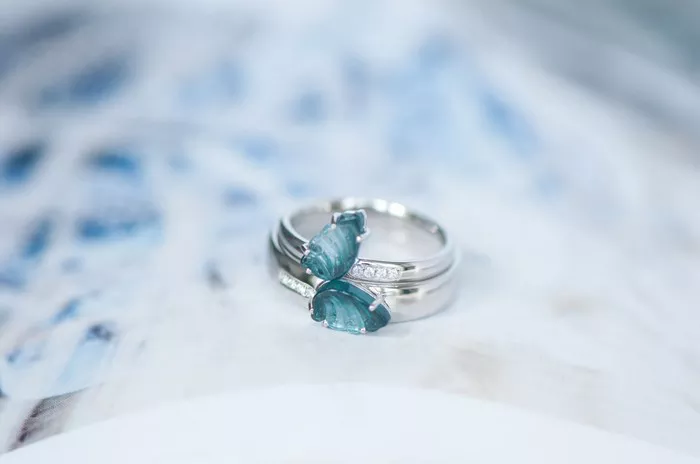Paraíba tourmaline, with its mesmerizing neon-blue and green hues, stands out among the most coveted gemstones in the world. Its rarity and vivid colors contribute significantly to its high value, but there’s more to its allure than just appearance. This article delves into the factors that make Paraíba tourmaline so expensive, exploring its geological origins, unique properties, mining difficulties, and market demand.
The Allure of Paraíba Tourmaline
Vibrant Colors
Paraíba tourmaline’s colors are unlike any other gemstone. The neon blues and greens, often described as electric or vivid, result from trace amounts of copper in the crystal structure. Some stones also contain manganese, contributing to a range of colors from violet to blue-green. This unique color palette sets Paraíba tourmaline apart from other gemstones, making it highly desirable.
Rarity and Limited Supply
Paraíba tourmaline is incredibly rare. Discovered in the late 1980s in the Brazilian state of Paraíba, these tourmalines were unlike any seen before. The initial discovery yielded a small amount of gemstone-quality material, and subsequent mining efforts have produced limited quantities. New deposits found in Nigeria and Mozambique also produce Paraíba-like tourmalines, but even these sources are limited.
Geological Origins and Formation
Unique Geological Conditions
Paraíba tourmaline forms under unique geological conditions. These conditions include the presence of specific elements like copper and manganese and the right temperature and pressure conditions during the crystal’s growth. The original Brazilian deposits are particularly notable because the geological conditions that created them were perfect for producing the vibrant colors associated with Paraíba tourmaline.
Distinctive Inclusions
Many Paraíba tourmalines contain distinctive inclusions that further enhance their value. These inclusions, often called “fingerprints,” can indicate the gemstone’s authenticity and origin. While inclusions in other gemstones might decrease their value, in Paraíba tourmalines, they often add to the stone’s character and uniqueness.
Mining Challenges
Difficult Extraction
Mining Paraíba tourmaline is a labor-intensive and challenging process. The original Brazilian mines are deep and require extensive effort to extract even small amounts of tourmaline. The mining conditions are often harsh, and the yield is relatively low compared to other gemstones. This difficulty in extraction contributes significantly to the high cost of Paraíba tourmaline.
Limited New Sources
While new deposits have been found in Nigeria and Mozambique, these sources also present challenges. The geological conditions in these areas are similar but not identical to those in Brazil, leading to differences in the stones’ appearance and quality. Additionally, the mining conditions in these countries can be difficult, further limiting the supply of high-quality stones.
Market Demand and Value
High Market Demand
The demand for Paraíba tourmaline far exceeds the supply. Collectors and jewelry enthusiasts covet these gemstones for their unique colors and rarity. The high demand drives up the prices, especially for stones with the most vivid and saturated colors. Auctions and private sales of high-quality Paraíba tourmalines often see record-breaking prices.
Investment Potential
Paraíba tourmaline is not only valued for its beauty but also for its investment potential. As one of the rarest and most sought-after gemstones, it holds significant value in the gemstone market. Collectors and investors are willing to pay premium prices for high-quality stones, viewing them as a stable and appreciating asset.
Cutting and Quality
Skilled Cutting
The cutting of Paraíba tourmaline requires exceptional skill. Because of its unique color properties, the cutter must maximize the stone’s color and brilliance while minimizing waste. High-quality cutting enhances the gemstone’s appearance and value, making it even more desirable in the market.
Quality Grades
Paraíba tourmalines are graded based on their color, clarity, and size. The most valuable stones have intense, neon-like colors, high clarity with minimal inclusions, and are of a significant size. Smaller or less intensely colored stones are still valuable but command lower prices. The grading process is meticulous, and only the best stones achieve the highest prices.
See Also: Tourmaline Effects in How Many Days
Synthetic and Imitation Concerns
Challenges of Synthetic Production
Creating synthetic Paraíba tourmaline is extremely challenging due to the unique geological conditions required for its formation. While some lab-grown tourmalines exist, replicating the exact conditions that produce the vibrant colors of natural Paraíba tourmaline is difficult. This adds to the gemstone’s allure and value, as natural stones remain far superior to any synthetic counterparts.
Market Protection
The gemstone market has strict regulations and certifications to protect buyers from imitations and synthetic stones. Reputable dealers provide certification from recognized gemological institutes, ensuring the authenticity of Paraíba tourmaline. This protection maintains the gemstone’s value and trust in the market.
Conclusion
Paraíba tourmaline’s high cost is a result of its exceptional beauty, rarity, and the challenges associated with its extraction and production. Its vibrant colors, unique inclusions, and geological origins set it apart from other gemstones. The limited supply and high demand further drive its value, making it one of the most expensive and sought-after gemstones in the world. Collectors and investors continue to seek out Paraíba tourmaline, ensuring its status as a prized gemstone for years to come.


